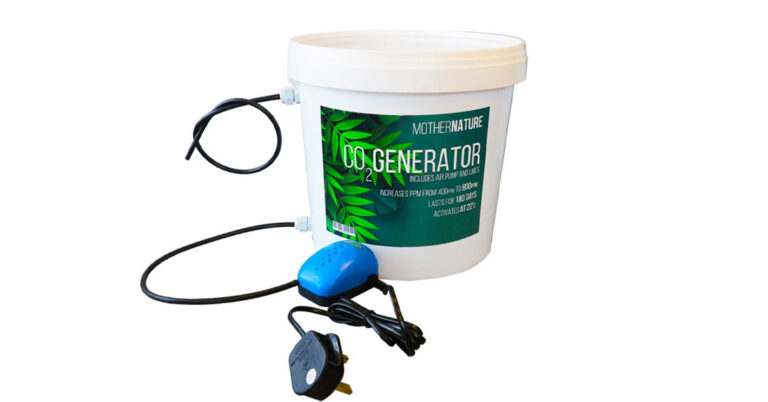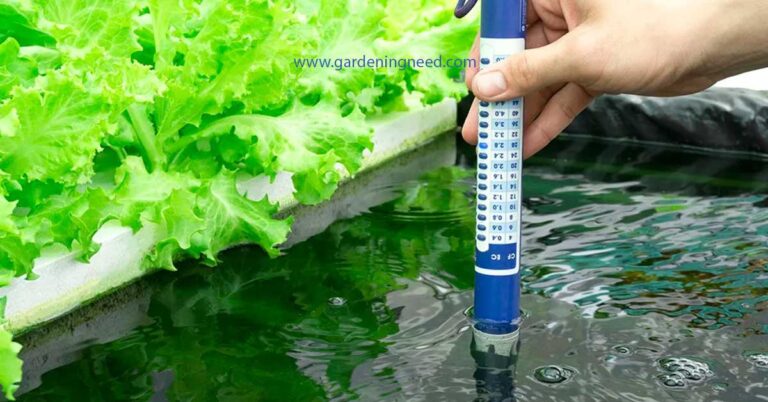Drain to Waste Hydroponic System Guide for Maximum Yield 2024
In the ever-evolving world of hydroponics, growers are turning to advanced techniques for optimal yields and plant health. One method gaining rapid popularity is the Drain to Waste Hydroponic System.
This cutting-edge system promises efficiency, precision, and unmatched results for cultivators seeking the best for their crops.
Explore the transformative potential of this innovative approach as we delve into the benefits and features that make Drain to Waste a game-changer in modern hydroponics.
Dynamics of a Drain to Waste System
A Drain to Waste System operates on the principle of providing plants with a precisely controlled nutrient solution while efficiently managing excess runoff.
Unlike recirculating systems, this method delivers nutrients directly to individual plants in a controlled manner, ensuring they receive precisely what they need without any risk of nutrient imbalances or buildup.
By comprehending the inner workings of this system, growers can harness its potential to optimize plant growth, minimize waste, and achieve unparalleled crop yields.
Exploring the Intricacies of a Drain to Waste System
A Drain to Waste System operates by delivering a precisely measured nutrient solution directly to individual plants, bypassing the need for recirculation. This method involves a reservoir containing a nutrient solution that is delivered via tubing or piping to each plant site.
The solution flows through the growing medium, supplying the plant’s roots with essential nutrients and oxygen.
The Flow Process
Within this system, the nutrient solution flows unidirectionally, ensuring that each plant receives its tailored dosage of nutrients.
Once the solution has nourished the plants, any excess runoff or drainage is collected and discarded rather than being recirculated, preventing any potential nutrient imbalances or salt buildup.
This precision in nutrient delivery and efficient waste management is a hallmark of the Drain to Waste System.
Advantages of this Method
1. Customization: Each plant receives a specific nutrient solution, allowing growers to tailor feeding regimens to individual plant needs.
2. Reduced Risk: Eliminating the recirculation of nutrient solutions minimizes the possibility of disease spread or nutrient imbalances.
3. Precise Control: By monitoring runoff, growers gain better insights into plant health and nutrient absorption.
These mechanics empowers growers to optimize their hydroponic setups, achieving healthier plants and maximizing yields through the streamlined Drain to Waste System.
Diving Deeper into the Three Principal Advantages of Drain to Waste Hydroponics
Precision Nutrition
The essence of the Drain to Waste System lies in its ability to offer tailored nutrition to individual plants. This precision-driven approach allows growers to fine-tune the nutrient solution for each plant’s specific needs.
By customizing the feeding regimen, plants receive an optimal blend of nutrients, promoting robust growth and maximizing yield potential. This fine-tuned nutrition strategy significantly reduces the risk of nutrient imbalances and deficiencies, ensuring healthier and more vigorous crops.
Reduced Risk of Contamination
One of the standout advantages of Drain to Waste Hydroponics is the minimized risk of contamination. Unlike recirculating systems that reuse nutrient solutions, Drain to Waste systems prevent the buildup of pathogens and potential contaminants.
By discarding excess runoff, growers prevent the spread of diseases and maintain a pristine growing environment. This proactive approach mitigates the risk of plant stress due to pathogens, ultimately fostering healthier and more resilient crops.
Enhanced Control and Monitoring
The Drain to Waste method offers unparalleled control and monitoring capabilities. By closely observing runoff and drainage, growers gain valuable insights into nutrient uptake and plant health.
This meticulous oversight allows for immediate adjustments to the nutrient solution, optimizing feeding schedules based on real-time plant needs. This level of control empowers growers to respond swiftly to changes, ensuring consistent growth and maximizing the potential for abundant yields.
Implementing a Drain to Waste System goes beyond the surface benefits; it revolutionizes plant nutrition, reduces risks, and offers unmatched control, providing growers with a strategic advantage in achieving top-tier hydroponic cultivation results.
Recirculating vs. Drain to Waste Hydroponic Systems
In the dynamic realm of hydroponics, the choice between a recirculating system and a Drain to Waste system can significantly impact plant growth and overall efficiency.
Let’s delve into the key distinctions that set these two approaches apart, empowering growers to make informed decisions tailored to their specific needs.
Recirculating Hydroponic Systems
In a recirculating system, the nutrient solution is continuously circulated through the growing medium, offering a closed-loop approach. While this method promotes resource efficiency by reusing the nutrient solution, it comes with its own set of considerations.
Resource Efficiency
Recirculating systems conserve nutrient solutions, making them a cost-effective option in the long run.
Risk of Contamination
The continuous reuse of the nutrient solution may increase the risk of disease spread and nutrient imbalances over time.
Uniform Nutrient Distribution
The recirculating nature ensures consistent nutrient availability across all plants in the system.
Drain to Waste Hydroponic Systems
Contrastingly, a Drain to Waste system operates by providing each plant with a specific nutrient solution, discarding any excess runoff rather than recirculating it. This method introduces a more targeted and controlled approach to hydroponic cultivation.
Precision Nutrition
Each plant receives a customized nutrient solution, allowing growers to tailor feeding regimens based on individual plant needs.
Reduced Contamination Risk
By preventing the recirculation of nutrient solutions, Drain to Waste systems minimize the risk of disease spread and nutrient imbalances.
Enhanced Control
Growers have granular control over nutrient delivery, enabling precise adjustments for optimal plant health and growth.
Choosing the Right Path for Your Hydroponic Journey
Ultimately, the decision between a recirculating and Drain to Waste system depends on factors such as resource efficiency, contamination risk tolerance, and the level of control desired.
By understanding these fundamental differences, growers can navigate the hydroponic landscape with confidence, selecting the system that aligns best with their cultivation goals.
Frequently Asked Questions
1. What is a Drain to Waste Hydroponic System?
A Drain to Waste System is a hydroponic setup where a precise nutrient solution is delivered directly to individual plants, and any excess runoff is discarded rather than being recirculated. This approach allows for tailored nutrition and efficient waste management.
2. How does a Drain to Waste System differ from recirculating systems?
Unlike recirculating systems that reuse nutrient solutions, Drain to Waste systems provide a specific solution to each plant and discard excess runoff. This ensures precise nutrition and reduces the risk of contamination or nutrient imbalances.
3. How often should the nutrient solution be provided in a Drain to Waste System?
The frequency of nutrient solution delivery depends on various factors, including plant type, growth stage, and environmental conditions. Generally, solutions are provided multiple times a day in smaller doses to ensure consistent nutrition.
4. Is a Drain to Waste System suitable for all types of plants?
Yes, Drain to Waste Systems can be adapted to suit various plants. However, proper adjustments in nutrient composition and delivery may be required based on the specific needs of different plant species.
5. What precautions should be taken when setting up a Drain to Waste System?
It’s essential to ensure proper drainage, adequate monitoring of runoff, and regular maintenance to prevent clogs or blockages in the system. Additionally, regular checks for nutrient solution pH and EC levels are crucial for optimal plant growth.
6. Can a Drain to Waste System save water compared to other hydroponic methods?
While Drain to Waste Systems do use water, their efficient delivery of nutrients directly to plants reduces overall water consumption compared to some recirculating systems that require continuous circulation.
7. How can I optimize plant growth using a Drain to Waste System?
To maximize growth, maintain meticulous control over nutrient solutions, ensure proper drainage, monitor plant health regularly, and adjust feeding schedules based on plant responses and growth stages.







